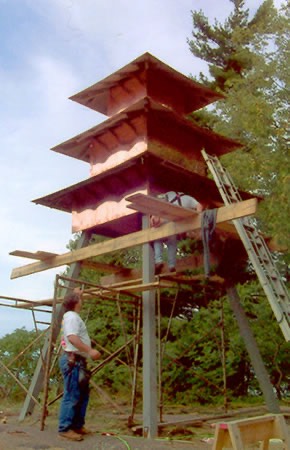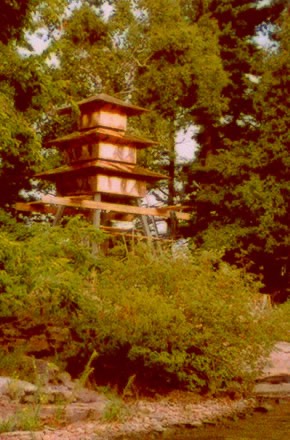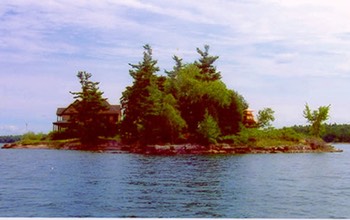

2002
Design: Jeremy Greene
Builder: Steve Taylor
Engineer: William Strodel
Owner: Sidney and Susan Manes
Location: Ojibway Island
The Manes Bat house is located in a clearing on an island among the Thousand Islands region of the St Lawrence River. It stands away from an existing summer house poking just beyond a cluster of trees.
When homeowner Susan Manes decided that she wanted to remove the approximately 2,000 – 3,000 bats that were living in the attic and walls of her house, she did something that most people wouldn’t even consider. She built a house for the animals, knowing the tremendous benefit they provide to the local ecosystem.
Having never attempted this type of project, we consulted a handbook provided by Bat Conservation International (a non-profit group based in Austin, Texas) that outlined the basic construction techniques for bat houses. These included using ¾” wide chambers, 2′ deep for the bats to roost in. This gives the animals enough space to move up or down in the house depending on what temperature they prefer. Another technique included creating a “sandwich”: of plywood layers to increase the surface area and allow more bats to roost. The handbook provided plans for small houses that could hold up to 100 bats. However, Mrs. Manes had such a large quantity of bats that we had to modify the design.
The design of the bat house consisted of a repeated pattern of three individual houses that together made up a unified whole structure. Reminiscent of a Japanese temple, or pagoda, the structure was meant to be both sculptural and functional. Since the houses increase in size from the top down, the guano from the bats drops freely to the ground and can be collected and used for fertilizer in nearby gardens.
